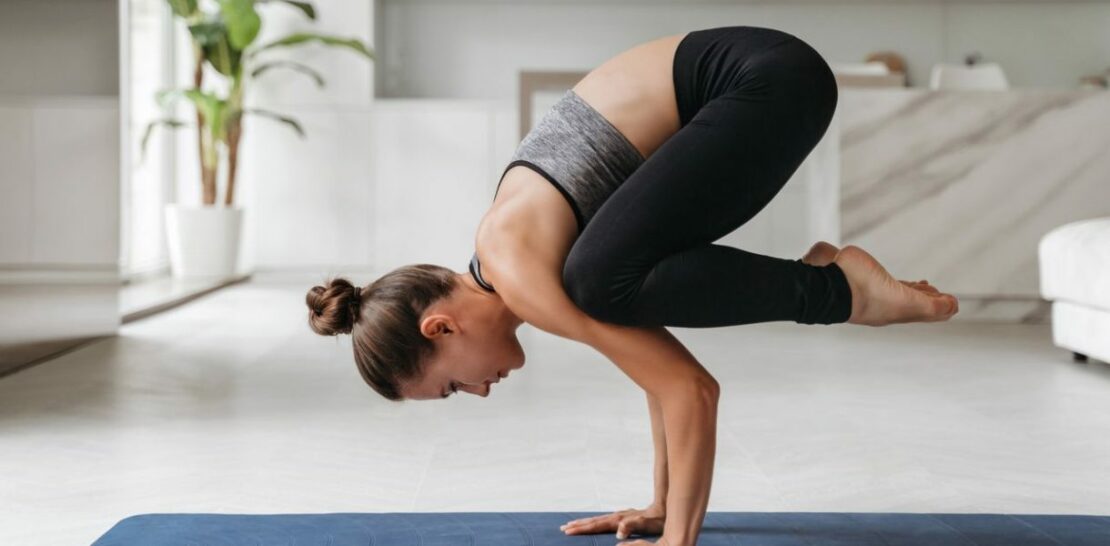As a dedicated yoga practitioner, you understand the importance of maintaining a clean and fresh yoga mat.
Not only does a clean mat provide a healthier and more pleasant practice environment, but it also helps extend the life of your mat.
In this comprehensive guide, we delve deep into the art of yoga mat maintenance, providing you with expert advice on how to clean, care for, and maintain your mat so that it’s always in pristine condition.
From choosing the right cleaning products and techniques to storage and routine care tips, we’ve got you covered on all things related to yoga mat cleanliness.
Understanding the Importance of a Clean Yoga Mat
Before diving into the specifics of cleaning your mat, it’s essential to understand why it’s so important to keep it clean. A clean yoga mat offers numerous benefits, including:
- Hygiene: Sweat, dirt, and other germs can accumulate on your mat over time, creating an unsanitary surface that can lead to skin irritations and infections. Regular cleaning helps keep your mat germ-free, ensuring a safer practice environment.
- Odor prevention: The buildup of sweat and bacteria can cause your mat to develop unpleasant odors, which can be distracting and off-putting during your practice. Cleaning your mat regularly helps prevent these odors from forming.
- Extended mat life: Dirt, oils, and sweat can break down the material of your mat over time, leading to a less supportive and comfortable surface. Proper cleaning and maintenance can help extend the life of your mat, saving you money in the long run.
- Improved practice: A clean, well-maintained mat provides a more enjoyable practice experience, allowing you to focus on your poses and breath without being distracted by a dirty or smelly surface.
Choosing the Right Cleaning Products and Tools
Now that we’ve established the importance of a clean yoga mat, let’s discuss the various cleaning products and tools you’ll need to get the job done. The right cleaning products will not only help you effectively clean your mat but also extend its life and preserve its quality. Key factors to consider when selecting cleaning products and tools include:
- Compatibility with your mat material: Different yoga mats are made from various materials, such as PVC, rubber, or cork. It’s essential to choose cleaning products that are compatible with your mat’s material to avoid damaging it. Always check the manufacturer’s recommendations for specific cleaning products and methods.
- Eco-friendliness: Opt for environmentally friendly cleaning products to minimize your impact on the planet. Look for products with natural, biodegradable ingredients and avoid those containing harsh chemicals, fragrances, or synthetic components.
- Gentle yet effective cleaning action: Choose cleaning products that effectively remove dirt, sweat, and bacteria without being too abrasive or harsh on your mat’s surface. A gentle cleaning solution will help maintain your mat’s integrity while keeping it fresh and clean.
Some popular cleaning tools and products for yoga mats include:
- Microfiber towels or soft, absorbent cloths
- Mild, natural soap (such as castile soap) or a specially formulated yoga mat cleaner
- A spray bottle for applying cleaning solution
- A soft-bristle brush or sponge for scrubbing stubborn spots
Step-by-Step Guide to Cleaning Your Yoga Mat
Armed with the right cleaning products and tools, it’s time to get down to the business of actually cleaning your yoga mat. Follow this step-by-step guide to ensure a thorough and effective cleaning process:
- Prepare your cleaning solution: Mix a small amount of mild, natural soap or yoga mat cleaner with warm water in a spray bottle. You can also add a few drops of essential oils, such as lavender or tea tree oil, for added antibacterial properties and a pleasant aroma.
- Remove surface dirt and debris: Before applying your cleaning solution, shake out your mat or use a soft brush to remove any surface dirt, hair, or debris.
- Apply the cleaning solution: Spray a generous amount of your cleaning solution onto the entire surface of your mat, making sure to cover both sides. Allow thesolution to sit for a few minutes to penetrate and break down any dirt, sweat, or bacteria.
- Wipe and scrub your mat: Using a microfiber towel or soft, absorbent cloth, gently wipe the entire surface of your mat, paying extra attention to any particularly dirty or stained areas. For stubborn spots, you can use a soft-bristle brush or sponge to gently scrub the area until clean.
- Rinse your mat: If your mat requires rinsing (check the manufacturer’s instructions), use a clean, damp cloth to remove any soap residue from the surface. Be careful not to soak your mat, as this can cause damage or promote the growth of mold and mildew.
- Dry your mat: Hang your mat to air dry, preferably in a well-ventilated area or outdoors. Ensure your mat is completely dry before rolling it up or using it again, as moisture can lead to mold and mildew growth.
Additional Tips for Maintaining a Clean and Fresh Yoga Mat
Beyond regular cleaning, there are several additional steps you can take to ensure your mat stays fresh and clean between uses. Incorporate these maintenance tips into your yoga practice routine to further enhance your mat’s cleanliness and longevity:
1. Practice on a clean surface
Whenever possible, choose a clean, debris-free surface for your yoga practice. This will help minimize the amount of dirt and germs that come into contact with your mat. If practicing outdoors or in a public space, consider using a yoga towel or blanket to create a barrier between your mat and the ground.
2. Keep your hands and feet clean
Before stepping onto your mat, make sure your hands and feet are clean and free of dirt or oils. This can help reduce the transfer of germs and bacteria to your mat, keeping it fresher and cleaner for longer.
3. Use a yoga towel
Invest in a high-quality yoga towel to place on top of your mat during practice. This not only provides extra cushioning and support but also absorbs sweat and moisture, reducing the amount of dirt and bacteria that accumulate on your mat.
4. Rotate and flip your mat
Regularly rotating and flipping your mat can help prevent uneven wear and tear, extending its life and maintaining a more comfortable practice surface. Consider marking one side of your mat as the “top” and the other as the “bottom” to ensure you’re always practicing on the same side.
5. Store your mat properly
When not in use, store your mat in a cool, dry place away from direct sunlight or extreme temperatures. Roll your mat loosely and avoid folding it, as this can cause creases and damage the material. If you must transport your mat, consider using a yoga mat bag or strap to protect it from dirt and damage.
In conclusion, maintaining a clean and fresh yoga mat is an essential aspect of a healthy and enjoyable yoga practice. By understanding the importance of a clean mat, choosing the right cleaning products and tools, following a thorough cleaning process, and incorporating additional maintenance tips into your routine, you can ensure your mat remains in pristine condition for years to come. Not only will this enhance your practice experience, but it will also support the longevity of your yoga mat, ultimately saving you money and reducing your environmental impact. Happy practicing!




